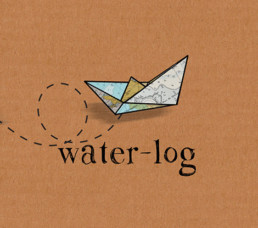Just when you’re getting ready to cross the largest ocean in the world the last thing you want to deal with is an unexpected costly and crucial repair. Now, I don’t think you need to know as much as we do about boats in order to be aware that a rudder is a fairly important part of your boat. And it was this essential little item which suddenly threw us into a quandary.
As James was installing our new Hydrovane (see previous post) he had to scramble about under the bed in our cabin, which is where our steering quadrant and rudder stock are located. Because he was in this awkward spot he thought it best to do some good boat cleaning and clean up the rudder stock while he was down there. But, it soon became clear, that what looked like a little surface rust was in fact pit corrosion in the 2 inch solid stainless steel stock which attaches our rudder to the skeg of the boat.
Worst case scenario of a problem with your rudder stock would be that the rudder actually falls off… mid-ocean, so no steerage whatsoever. Yup, I bet you can imagine how overjoyed we were to discover this little hiccup.
The best part about being in a marina is that you can get a lot of unsolicited advice from a really broad spectrum of people. The guys who came by and asked questions and loaned us tools while James fitted the Hydrovane now proved themselves to be doubly useful by talking through this latest problem of pit corrosion in the rudder stock. Amongst these casual cruisers are guys with backgrounds in engineering, formula one racing and decades of experience of their own yacht maintenance. The general consensus seemed to be that the corrosion was most likely to be electrolytic in nature, i.e. when two different metals are in electrical contact within salt water.
Sure enough, we found there was a half volt difference between the stock and the stuffing box and were able to stop the condition getting any worse. Plus all the rest of the stock below this point showed no signs of corrosion but it raised the nagging question of whether or not the corrosion that we did have would significantly effect the strength of the rudder post or not.
Not wanting to take any big risks with our boat on the verge of launching off into the biggest ocean out there we weighed the pros and cons of hauling out here in Mexico, last minute, dropping the rudder and getting the stock welded and faired. Or there was also the possibility of remaining on the dock, removing the rudder in the water as the stock penetrates the hull well above the waterline. But perhaps the issue could be dealt with at a later stage, once we arrive in New Zealand and have more time to deal with the work.
No one could make such a decision for us so we talked and talked to as many people as possible in order to feel happy about the route we chose. We were even in the lucky position to be able to consult with the designer himself and ask his opinion as to whether a number of small pits in the stock, none over 2mm deep, would compromise the strength of the stock to the point that it would be unsafe for us to set sail.
In the end we’ve decided to leave it until New Zealand and are happy that the problem hasn’t rendered our rudder flimsy and unsafe and is also not getting progressively worse. Here is a picture of the pits in all their glory. Phew! Fingers crossed then…

